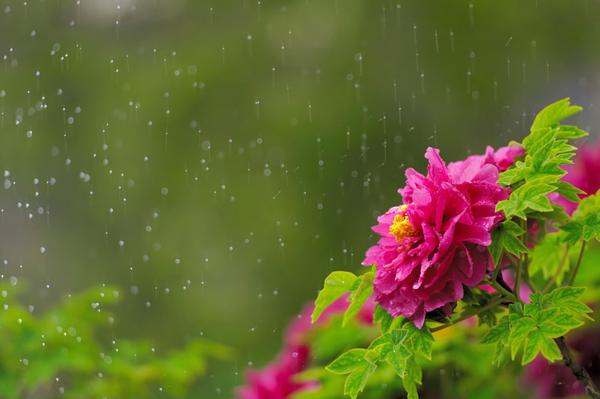
Grain Rain (Chinese: 谷雨), the 6th solar term of the year, began this year on April 20 and ended on May 4. It begins when the Sun reaches the celestial longitudes of 30° and ends when it reaches the longitude of 45°. The meaning of the grain rain is that spring shower nurtures grains. Before and after few days of Grain Rain, the air humidity and rains increase, and thus it is great for plant-growing. [Photo by Wang Jin/Palace Museum]
“Phenology of Forbidden City” is a well-received column on Palace Museum’s official microblog, which captures the transition of four seasons inside the museum.
As the traditional Chinese lunar calendar divides the year into 24 solar terms, it shows beautiful photos of flowers, trees, birds, and cats inside the museum according to each solar term.
“The photos enable people to see the transition of four seasons in a year, which makes it feel like the Palace Museum is alive,” the museum’s photographer Wang Jin told Beijing Daily.
According to Wang, the idea of uploading the column struck him after his photos on the first snow on Forbidden City on Feb 7 became a great hit on the museum’s official Weibo.
Thereafter, on each solar term, Wang would take some photos of animals and plants to reflect the change of seasons during the year.
“We can experience the beauty of the Forbidden City only with our souls. We should slow down our steps to observe carefully, rather than glance at things in a hurry, and then we can see a more beautiful Palace Museum,” Wang said.
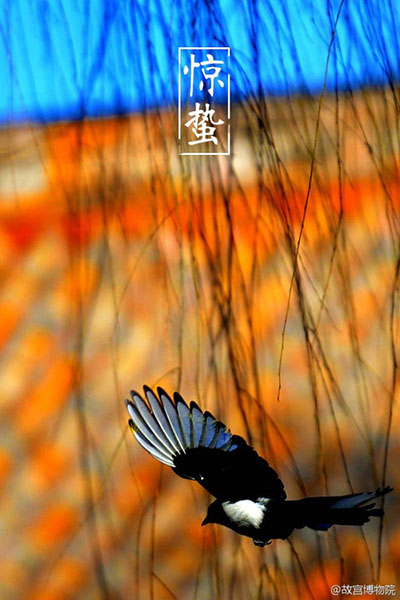
Awakening of Insects (Chinese: 惊蛰), the 3rd solar term of the year, began this year on Mar 6 and ends on Mar 20. It begins when the Sun reaches the celestial longitude of 345°and ends when it reaches the longitude of 360°. Traditional Chinese folklore says that during the Awakening of Insects, thunderstorms will wake up the hibernating insects, which implies that the weather is getting warmer. [Photo by Wang Jin/Palace Museum]

Vernal Equinox (Chinese: 春分), the 4th solar term of the year, began this year on Mar 21 and ended on April 4. It begins when the Sun reaches the celestial longitude of 0° and ends when it reaches the longitude of 15°. On the vernal equinox day, the sun will be directly shine on the equator making the day and night time equal. Thus in the ancient time, the day of vernal equinox was also known as “point separating day and night”. [Photo by Wang Jin/Palace Museum]
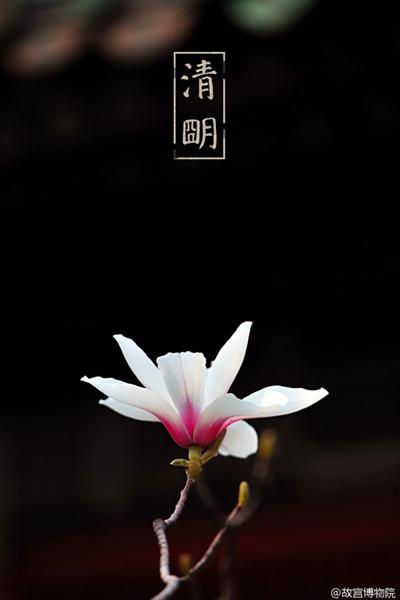
Clear and Bright (Chinese: 清明), the 5th solar term of the year, began this year on April 5 and ended on April 19. It begins when the sun reaches the celestial longitude of 15°and ends when it reaches the longitude of 30°. The Qingming Festival, also known as Tomb Sweeping Day, is a traditional Chinese festival on the first day of the fifth solar term of the traditional Chinese lunar calendar. The name suggests a time for people to go outside and enjoy the greenery of springtime, but it is mostly noted for its connection with Chinese ancestral veneration and the tending of family graves.[Photo by Wang Jin/Palace Museum]

Start of Summer (Chinese: 立夏), the 7th solar term of the year, began this year on May 5 and ended on May 20. On this day, the point on the earth’s surface at which the sun’s rays are perpendicular to the ground reaches 45 degrees. During the Start of Summer time, all vegetation is in luxuriant growth. It’s a crucial time for the harvest of wheat, rape and other summer crops. Meanwhile, the temperatures of North and West China increase quickly during this period of time, but the rainfall is still insufficient. In spring, heavy winds accelerate evaporation from the soil making the dry air and soil unfavorable for the growth of crops. Weeding is every important during this period. It can remove the grass, combat drought and flood, raise the temperature of soil, and accelerate the decomposition of soil nutrients.[Photo by Wang Jin/Palace Museum]
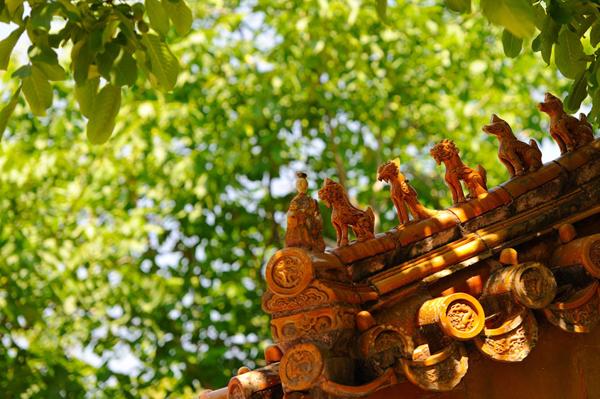
Lesser Fullness of Grain (Chinese: 小满), the 8th solar term of the year, began this year on May 21 and ended on June 6. It begins when the Sun reaches the celestial longitude of 60°. Lesser Fullness of Grain marks the beginning of the period when the summer crops of grain begin to grow. As Lesser Fullness of Grain comes, the season of hot and humid days commences. Precipitation increases as both northern and southern China enter the summer season. During Lesser Fullness of Grain, everything flourishes, and the human body’s physiological activities are at their most active. One should pay attention to proper nutrition and keep diets light and healthy so as to ensure the heat and humid weather do not wear the body down.[Photo by Wang Jin/Palace Museum]
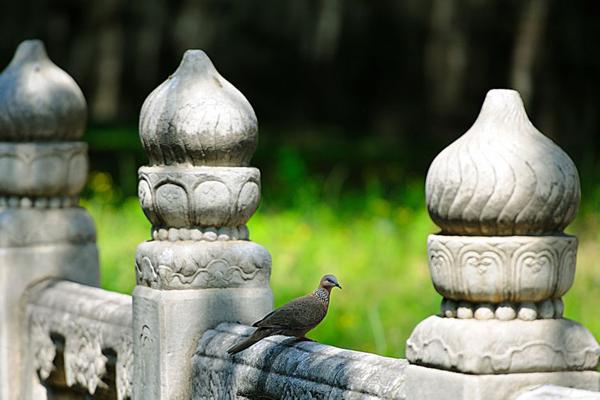
Grain in Beard (Chinese: 芒种), which refers to the crops mature, is the ninth of the 24 solar terms, and it began this year on June 6 and ended on June 20. It begins when the Sun reaches the celestial longitude of 60° and ends when it reaches the longitude of 75°. Bearded means the seeds mature of the barley, wheat and other crops, thus reminds people it is very urgent to rush for the harvest. Summer-sown crops such as millet will be sown around this term.[Photo by Wang Jin/Palace Museum]
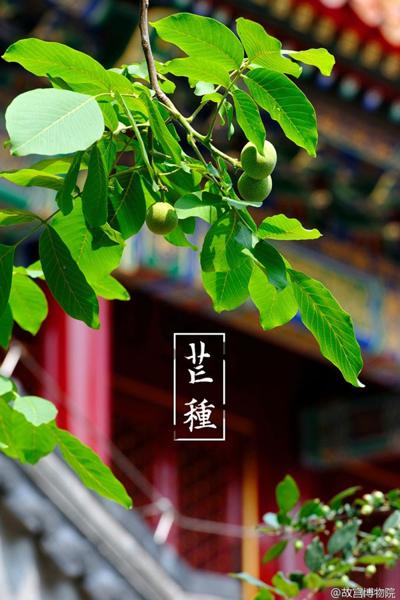
Grain in Beard (Chinese: 芒种), which refers to the crops mature, is the ninth of the 24 solar terms, and it began this year on June 6 and ended on June 20. It begins when the Sun reaches the celestial longitude of 60° and ends when it reaches the longitude of 75°. Bearded means the seeds mature of the barley, wheat and other crops, thus reminds people it is very urgent to rush for the harvest. Summer-sown crops such as millet will be sown around this term.[Photo by Wang Jin/Palace Museum]
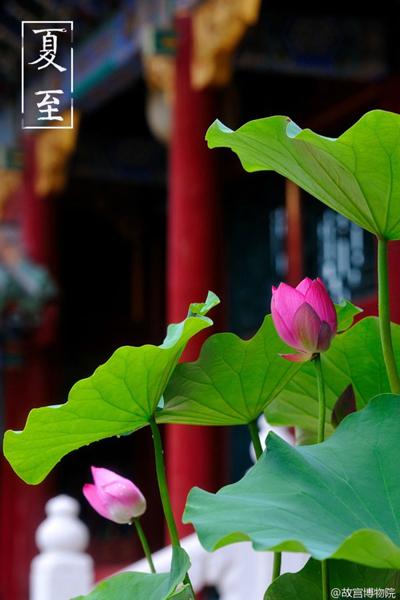
The summer solstice (Chinese: 夏至) fell on June 21st and ended on July 6 this year. It is the tenth solar terms of the 24 Chinese solar terms, marking the day of the longest daytime and shortest nighttime. Starting the summer solstice, the days begin to draw out. After the summer solstice, temperature rises in north China and there’s plenty of sunshine and rainfalls, which is good for the growth of crops. While areas in the middle and lower reaches of the Yangtze River are in rainy season, during which persistent and heavy rains are common. The hottest days of summer begin after the summer solstice. Crops thrive in these hottest days and at the same time, while weeds and pests also grow actively. It’s a busy farming season.[Photo by Wang Jin/Palace Museum]

The summer solstice (Chinese: 夏至) fell on June 21st and ended on July 6 this year. It is the tenth solar terms of the 24 Chinese solar terms, marking the day of the longest daytime and shortest nighttime. Starting the summer solstice, the days begin to draw out. After the summer solstice, temperature rises in north China and there’s plenty of sunshine and rainfalls, which is good for the growth of crops. While areas in the middle and lower reaches of the Yangtze River are in rainy season, during which persistent and heavy rains are common. The hottest days of summer begin after the summer solstice. Crops thrive in these hottest days and at the same time, while weeds and pests also grow actively. It’s a busy farming season. [Photo by Wang Jin/Palace Museum]
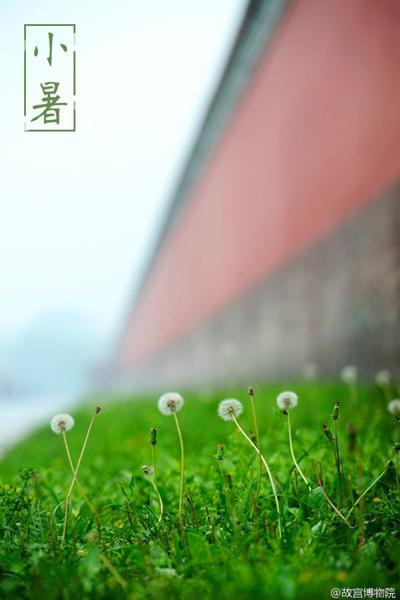
Minor Heat (Chinese: 小暑), the eleventh solar term in the Chinese lunar calendar, fell on July 7 and ended on July 22 this year. It begins when the Sun reaches the celestial longitude of 105°and ends when it reaches the longitude of 120°.”暑(Shu)” in Chinese means heat, and Minor Heat means it is a little bit hot, but not very hot. This term indicates the beginning of the escalating temperature, but it is still far from the hottest days. This is the situation for most parts of China. During the period of Minor Heat, most areas in the South China see the coming the period with the most thunderstorm days.[Photo by Wang Jin/Palace Museum]
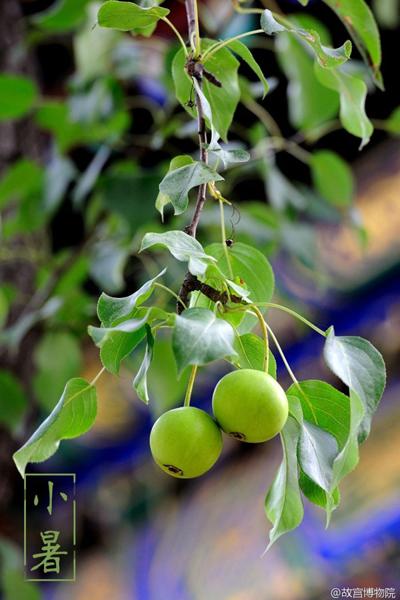
Minor Heat (Chinese: 小暑), the eleventh solar term in the Chinese lunar calendar, fell on July 7 and ended on July 22 this year. It begins when the Sun reaches the celestial longitude of 105°and ends when it reaches the longitude of 120°.”暑(Shu)” in Chinese means heat, and Minor Heat means it is a little bit hot, but not very hot. This term indicates the beginning of the escalating temperature, but it is still far from the hottest days. This is the situation for most parts of China. During the period of Minor Heat, most areas in the South China see the coming the period with the most thunderstorm days.[Photo by Wang Jin/Palace Museum]
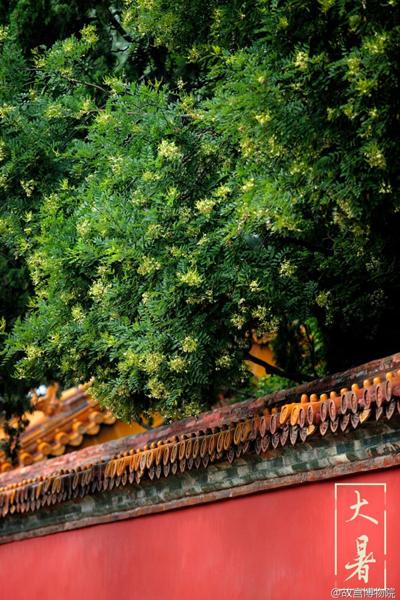
Major Heat, (Chinese: 大暑), the 12th solar term of the year, began this year on July 23 and ended on August 7. It begins when the Sun reaches the celestial longitude of 120° and ends when it reaches the longitude of 135°. It more often refers in particular to the day when the Sun is exactly at the celestial longitude of 120°. During Major Heat, most parts of China enter the hottest season of the year. During Major Heat, the sunshine, high temperatures, and heavy rainfall are good for agricultural crops. But like Minor Heat, many natural calamities such as floods, droughts and typhoons also happen during Major Heat. Therefore, it’s important to harvest and plant in time to avoid setbacks caused by natural disasters.[Photo by Wang Jin/Palace Museum]

Major Heat, (Chinese: 大暑), the 12th solar term of the year, began this year on July 23 and ended on August 7. It begins when the Sun reaches the celestial longitude of 120° and ends when it reaches the longitude of 135°. It more often refers in particular to the day when the Sun is exactly at the celestial longitude of 120°. During Major Heat, most parts of China enter the hottest season of the year. During Major Heat, the sunshine, high temperatures, and heavy rainfall are good for agricultural crops. But like Minor Heat, many natural calamities such as floods, droughts and typhoons also happen during Major Heat. Therefore, it’s important to harvest and plant in time to avoid setbacks caused by natural disasters.[Photo by Wang Jin/Palace Museum]
